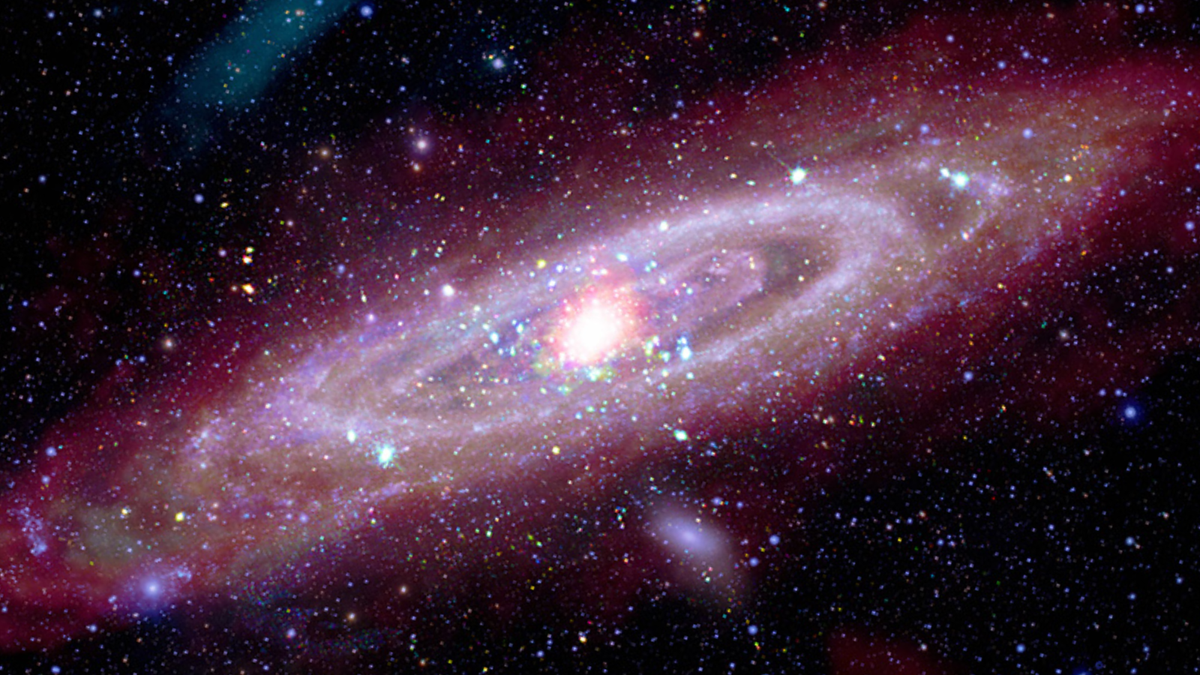Now Reading: NASA’s Chandra Telescope Unveils Stunning New View of Andromeda Galaxy
-
01
NASA’s Chandra Telescope Unveils Stunning New View of Andromeda Galaxy
NASA’s Chandra Telescope Unveils Stunning New View of Andromeda Galaxy

Speedy summary
- A stunning new image of the Andromeda galaxy (Messier 31) has been created using data from NASA’s Chandra X-ray telescope and numerous othre space and ground-based observatories, including ESA’s XMM-Newton, GALEX, Spitzer space Telescope, herschel, Planck, COBE, and the Westerbork Synthesis Radio Telescope.
- These instruments captured Andromeda across diffrent wavelengths of light in the electromagnetic spectrum to produce a composite image.
- The image commemorates astronomer Vera C. Rubin’s groundbreaking work in identifying dark matter through observations of Andromeda’s rotation in the 1960s.
- Rubin demonstrated that Andromeda is surrounded by a halo of invisible matter exerting gravitational forces necessary to maintain its rotational speed. This discovery revolutionized our understanding of galaxies and led to the conclusion that dark matter constitutes about 85% of the universe’s mass.
- Observations from Chandra revealed high-energy radiation around Andromeda’s central supermassive black hole (M31), which has a mass estimated at 100 million times that of the Sun-vastly exceeding Sagittarius A at the heart of our Milky Way.
- Other tributes to Vera C. Rubin include commemorative coins issued by the US Mint as part of its American Women Quarters Program and initial images released by the Vera C. Rubin Observatory ahead of its Legacy Survey program.
!andromeda Galaxy Image
A composite image showing pink and purple clouds on a starry background.
!Full Image Version
The complete version showcasing intricate details.
!Wavelength Spiral diagram
A diagram illustrating various wavelengths used for imaging.
Indian Opinion Analysis
The creation of this extraordinary image highlights global collaboration in astronomy across agencies such as NASA and ESA while underscoring advancements made possible through decades-long global scientific pursuits. For India-a nation striving for prominence within space exploration through ISRO’s endeavors-efforts like these serve as inspiration for expanding observational capabilities beyond Earth.
Furthermore, honoring vera C. Rubin aligns with broader efforts worldwide to recognize women scientists who have shaped fundamental discoveries like dark matter identification-a topic integral not only to astrophysics but also particle physics research globally. India could benefit from amplifying awareness about such contributions while boosting initiatives aimed at empowering women in STEM fields.
images such as this one reiterate astronomy’s capacity for deeper universal insights rooted in cross-disciplinary study spanning different spectrums-a methodology applicable even within India’s science missions advancing telescope technology (like ASTROSAT or future projects). Leadership here would further solidify India among contributors shaping how humanity perceives its cosmic neighborhood.
























